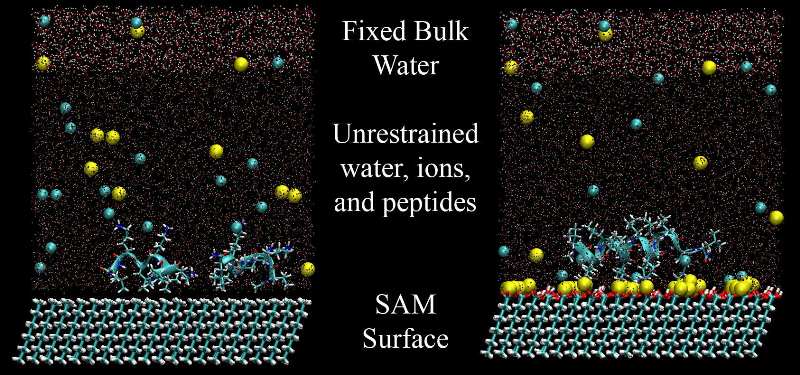Welcome to the Biomolecular Modeling Lab
The Biomolecular Modeling Lab was established to theoretically assess molecular behavior at the atomistic level to complement the experimental studies of the Biomolecular Interactions Lab. The lab conducted molecular dynamics simulations using advanced sampling techniques to model the behavior of materials (e.g., polymer hydration and hydrolysis) and to predict the adsorption behavior of peptides and proteins to different types of solid material surfaces. We particularly focused on the development of advanced sampling algorithms, modeling methods, and force field parameterization to accurately simulate peptide and protein adsorption behavior.
The Biomolecular Simulation Lab (407 Rhodes) maintains a set of six UNIX workstations networked with Clemson University's Palmetto Computer Cluster for research computing, which is administrated through Clemson University's Cyberinfrastructure Technology Integration (CITI) group. The Palmetto Cluster is a fully staff-supported high-performance research computing center, which is located in its own secured facility at Clemson University's research park. Clemson Computing and Information Technology (CCIT) maintains the Palmetto Cluster that provides a cost-effective shared computing infrastructure for faculty and students. The Palmetto Cluster is a community resource, jointly funded by Clemson University and research grants secured by participating faculty. With performance of more than 85 trillion floating point operations per second (teraFLOPS), the Palmetto Cluster is ranked number 85 worldwide on the list of Top500 Supercomputing Sites (June 2010). The Palmetto Cluster currently maintains 1541 nodes with 8 dual quad-core processors per node (12,328 cores total), Myrinet 10G high-performance network interconnect, and 120 TB of large-scale, high-performance disk storage capacity.

